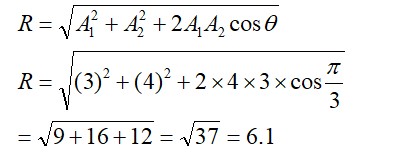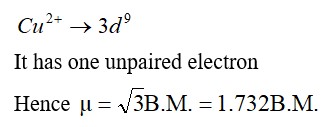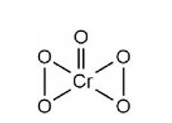8.46 Write down the number of 3d electrons in each of the following ions: Ti2+, V2+ , Cr3+, Mn2+, Fe2+, Fe3+, Co2+, Ni2+ and Cu2+. Indicate how would you expect the five 3d orbitals to be occupied for these hydrated ions (octahedral).
8.46 Write down the number of 3d electrons in each of the following ions: Ti2+, V2+ , Cr3+, Mn2+, Fe2+, Fe3+, Co2+, Ni2+ and Cu2+. Indicate how would you expect the five 3d orbitals to be occupied for these hydrated ions (octahedral).
-
1 Answer
-
8.46
S.no
Ion
Configuration
Number of 3d electrons
No. of unpaired Electrons
3d orbitals
1
Ti2+
3d2
2
2
t22g e0g
2
V2+
3d3
3
3
t32g e0 g
3
Cr3+
3d3
3
3
t32g e0 g
4
Mn2+
3d5
5
5
t32g e2 g
5
Fe2+
3d6
6
4
t42g e2 g 6
Fe3+
3d5
5
5
t32g e2 g 7
Co2+
3d7
7
3
t52g e2 g
8
Ni2+
3d8
8
2
t62g e2 g
9
Cu2+
3d9
9
1
t62g e3g
Note: In an octahedral field, the d-orbitals split into two sets of orbitals, the set of orbitals ( dxy, dyz, dxz) with lower energy is called t2g and the set of orbitals (dx2-y2 and dz2) with higher energy is called eg
Similar Questions for you
K2Cr2O7 + H2O2 + H2SO4->
Potassium permanganate in alkaline medium oxidise lodide to lodate.
Compound A is
KMnO4 decomposes upon heating at 513 K and forms K2MnO4 and MnO2.
2KMnO4
Taking an Exam? Selecting a College?
Get authentic answers from experts, students and alumni that you won't find anywhere else
Sign Up on ShikshaOn Shiksha, get access to
- 65k Colleges
- 1.2k Exams
- 679k Reviews
- 1800k Answers




